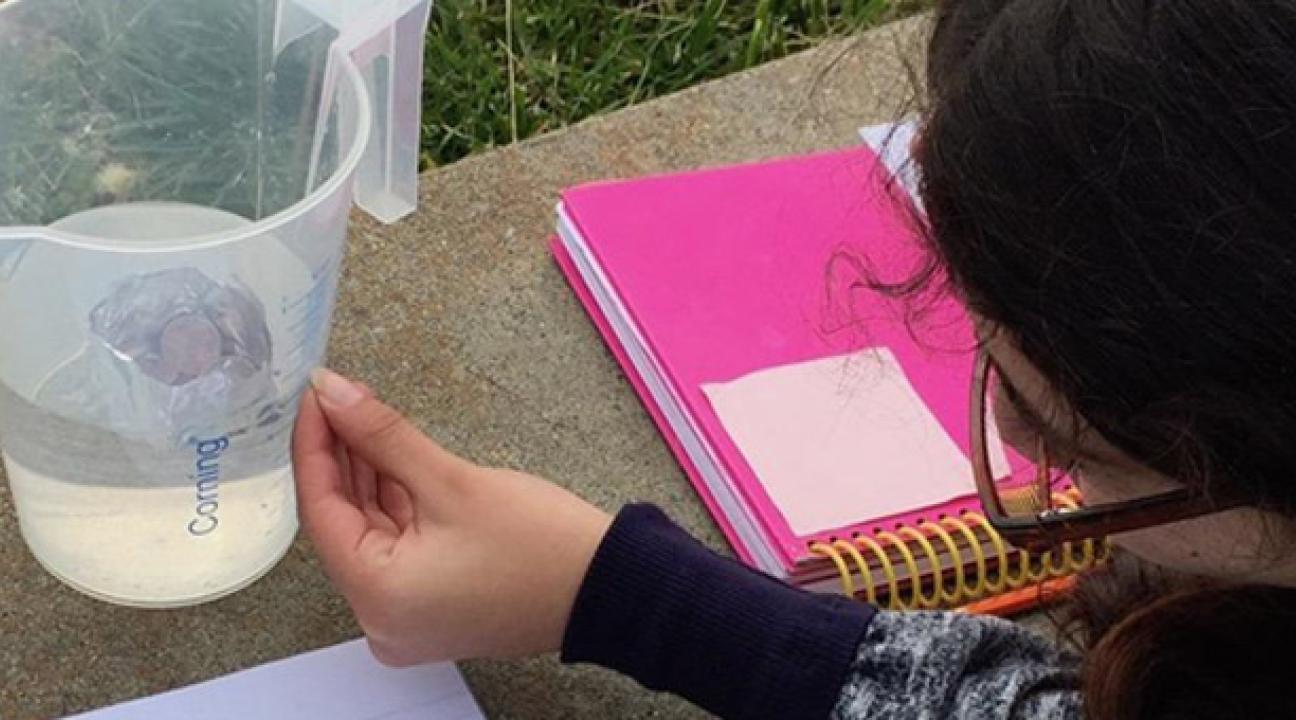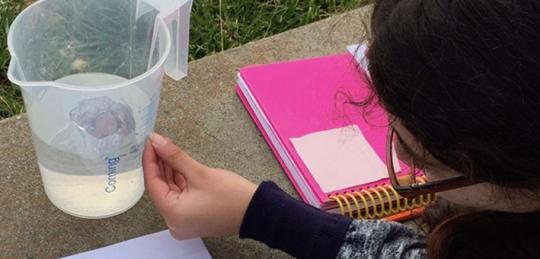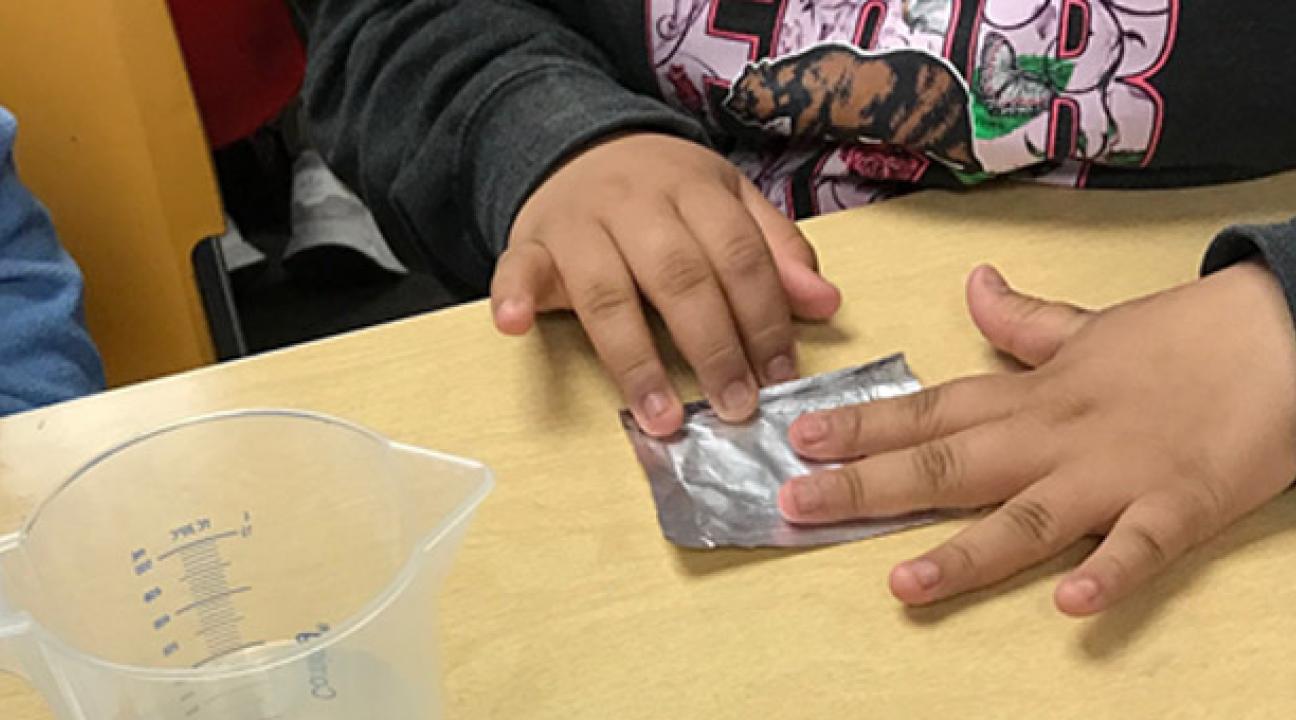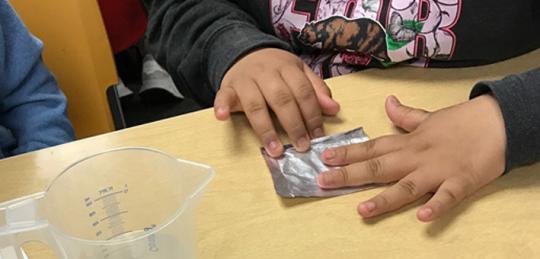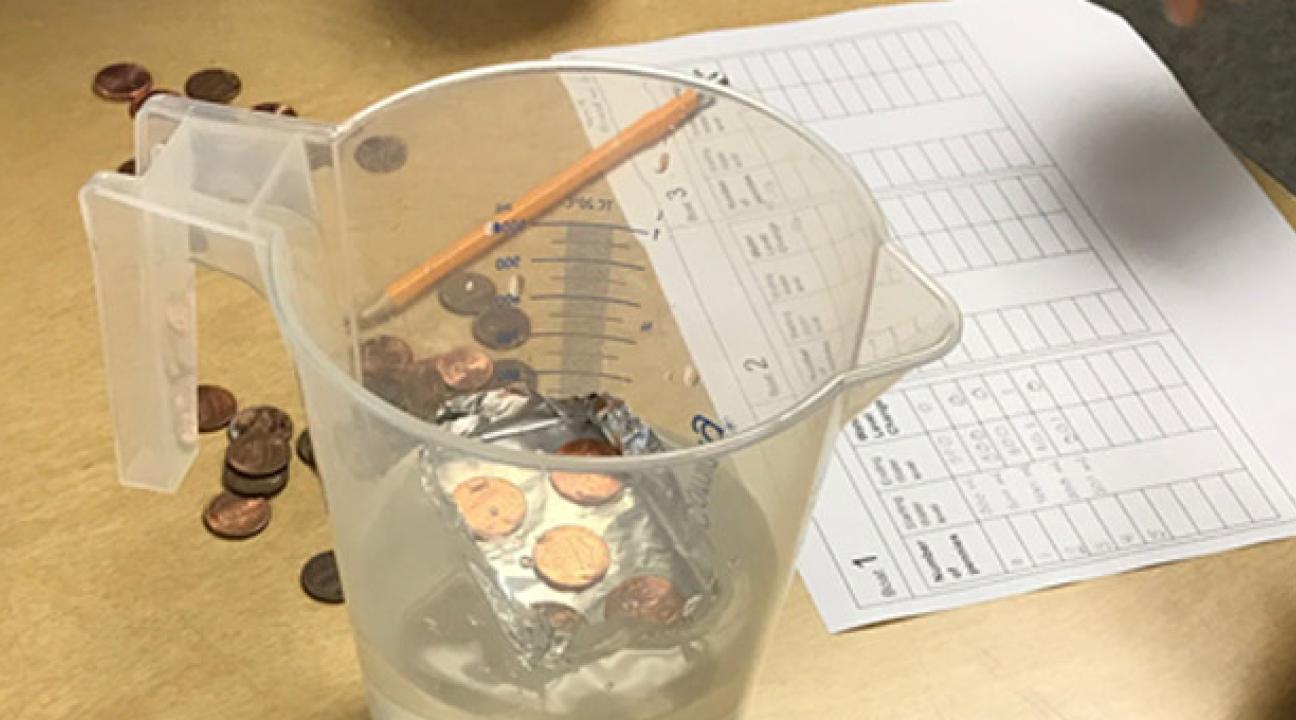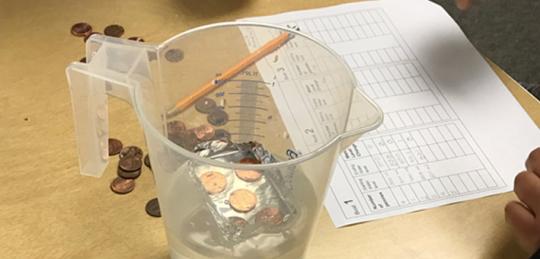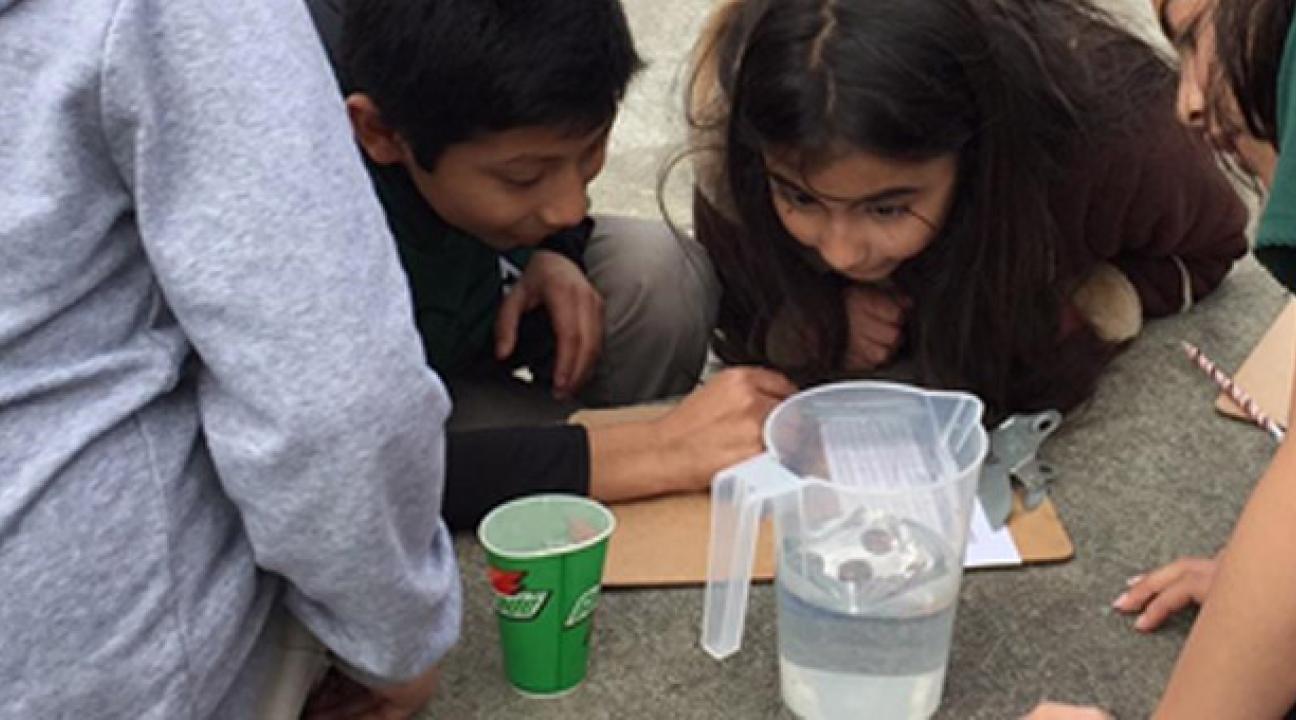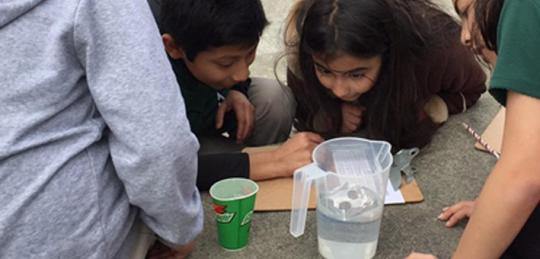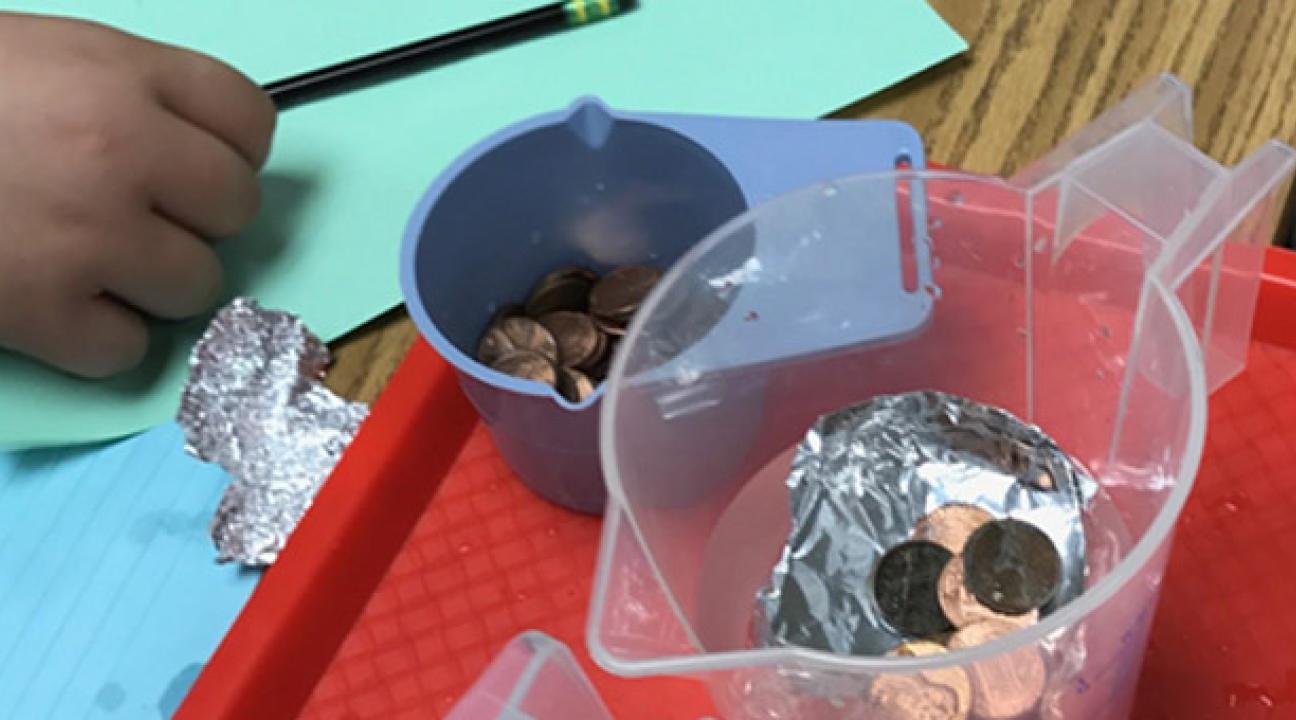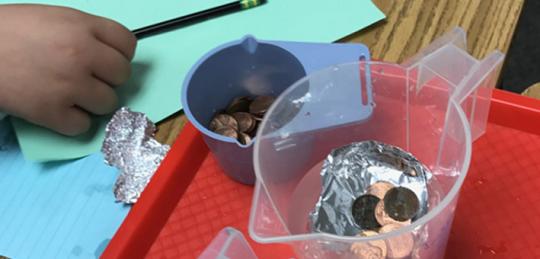What Floats Your Boat? Data and Linear Relationships
Cycle Type
Embedded Math
This is the Embedded Math cycle type. Cycle types used to organize cycles by categories.
Maker Mindset
In maker tasks, students are invested in what they create, are interested in using what they’ve created, and in learning what classmates have created. This should be true in both making and in mathematics.
During maker projects, participating productively as part of a group generally leads to better and more robust work. Pooling and building on each other’s ideas creates better maker designs and products. Likewise, solving mathematics problems or building a mathematical model is a creative process that benefits from collaboratively generating and/or vetting ideas and working together.
Guessing is low risk and creates curiosity. We know guesses are usually wrong, so students feel safe floating new ideas. Predicting is an explicit part of the process, and they are supposed to guess, not demonstrate knowledge. Coming up with a guess makes students think about parameters for reasonable answers and aspects/variables of the situation. This habit of mind applies equally to maker and mathematics situations.
CC Standards:
8.F.B.4, 8.SP.A.3
You can find descriptions of all common core math standards at Common Core Math Standards
Students will build a boat from tinfoil, with the goal of floating at least 15 pennies. After some open building and exploration time, they will keep track of the changing water level in the cylinder as they add pennies.
In the follow-up lesson, students will graph (as a class) the resulting water level change-vs-pennies relationship, and use it to predict water level change for a fixed number of pennies added to another boat. In an optional third modeling lesson (ideally staged several weeks after the initial lessons), students will estimate whether a boat in a video will cause the container to overflow when pennies are added.
The primary mathematical content focus is investigating patterns of association in bivariate data: scatterplots, patterns in scatterplots, straight line models of association, informal assessment of model fit, and use of a straight-line model to make predictions. Standards in the Functions domain also play a key role, when constructing a linear function to model the water level change vs pennies relationship.
Important prior standards that are reinforced here include: seventh grade standards on use of variables to represent quantities and solve problems in real-world settings (7.EE.B.4); sixth grade standards on statistical variability (6.SP.2) and quantitative relationships between dependent and independent variables (6.EE.9); and fifth grade standards about plotting on a coordinate plane (5.G.1) and representing (5.MD.2) and interpreting (5.G.2) data.
This cycle should take two or three 50-minute class periods.
In 5th grade (5.G.A.2), students begin to understand a point on a coordinate plane as representing a pair of numbers that are associated (in this case, a pair relating the number of pennies with the associated water level change). In 6th grade, students begin to explore statistical variability by describing distributions using measures of center and spread (6.SP), and to represent relationships between dependent and independent variables (6.EE.C). The concept in 8.SP, exploring patterns of association in bivariate (involving two changing quantities) data, brings together these ideas. The relationship between water level change and number of pennies is a proportion, so 7th grade work on analyzing proportional relationships and using them to solve real-world and mathematical problems (7.RP) also is exercised.
Because it combines so many concepts, patterns of association in bivariate data is a difficult topic. The idea of a relationship between two changing quantities is inherently more complex than the idea of variability within a single measurement. Perceiving a trend in data with statistical variability requires a combination of the ideas of representing a set of data with a measure of center, along with the idea of a functional relationship between two changing quantities.
Extrapolating from known data is predicting values beyond the range of the known data; interpolating is predicting within the range of known values. Extrapolation typically requires more care to ensure that the conditions responsible for the observed relationship are still valid in the extended range.
Prior Experience:
See “About the math” for previous grades’ content that this cycle builds on A unit on using functions to model relationships between quantities (8.F.B) should occur prior to this cycle in the school year
| Material | QTY | When Used | Reusable |
|---|---|---|---|
| 500 ml & 1 liter beakers, with 10ml or 20 ml markings | 1 per team (preferably mix of sizes) | Challenge, Lesson 2 | Yes |
| 2-liter beaker | 37 | Challenge Lesson Activity 1 | Yes |
| Water pitchers (unmarked) | 5 for class | Challenge, Lesson 2 | Yes |
| Heavy-duty aluminum foil: 4” squares and 6” squares | Four 4” squares per team, two 6” squares for the class | Challenge, Lesson 2 | No |
| Pennies for weights | Approximately 50 (1 roll) per team | Challenge, Lesson 2 | Yes |
| Paper towels | 4+ per team | Challenge, Lesson 2 | No |
| 3” sticky notes | 6 per team | Challenge, Lesson 2 | No |
| Grid-printed poster paper (could use grid on whiteboard instead), prepared with axes and vertical axis scale from 0 to 150, horizontal from 0 to 50, no labels yet) | 1 for class | Lesson 2 | No |
| 8½ x 11 graph paper | 2 per team | Lesson 2 | No |
| Data sheet | 1 per team plus some extras | Lesson 2 | No |
| Sticky dots, approx ½”. Repositionable preferred | 4 per team (different colors for every team would be even better) | Lesson 2 | No |
| (optional) Lunch trays | 1 per team | Challenge, Lesson 2 | Yes |
Note: it is important to use “heavy duty” foil. Normal foil tears too easily.
Lessons:
- Lesson 1: What Floats Your Boat?
- Lesson 2: Why is there more water?
- Lesson 3: What a Mess! (optional)
Learning Cycle Wrapup
A final all-class discussion about floating objects and displacement should lead to the following points being raised:
- As pennies are added to the boat or cup, the weight of the pennies causes the cup or boat to “displace” some of the water--that is, to push the water out of the way. This is an important scientific principle called “Archimedes’ Principle.”
- Each penny added causes the same amount of water to be displaced: About 2.5 ml
- We can tell the amount that the water will rise for a given number of pennies, once we know the amount that each penny causes the water to rise
- When we graph the pairs of (displacement in ml, # pennies), the shape of the graph will be a straight line, because each penny causes the water level to change by the same amount
Teacher Reflection
Progress in Standards for Mathematical Practice assessment
The modeling lesson at the end of the cycle is a good chance to assess the target SMPs: 1 (Make sense of problems and persevere in solving them), 2 (Reason abstractly and quantitatively), and 4 (Model with mathematics).
Modeling: Battery Charging (extrapolating a linear relationship): https://www.illustrativemathematics.org/content-standards/tasks/641
Progress in Mathematical content assessment
Patterns of association in bivariate data:
- Birds’ Eggs: https://www.illustrativemathematics.org/content-standards/8/SP/A/1/tasks/41
- Texting and Grades (important to include one relationship with a “downward” trend):https://www.illustrativemathematics.org/content-standards/8/SP/A/1/tasks/975
- Animal Brains (includes constructing scatterplot): https://www.illustrativemathematics.org/content-standards/8/SP/A/1/tasks/1520
- Laptop battery charge: https://www.illustrativemathematics.org/content-standards/8/SP/A/2/tasks/1558
- US Airports https://www.illustrativemathematics.org/content-standards/8/SP/A/3/tasks/1370
Progress in Maker mindset assessment
[Create a Maker Mindset version of the 5x8 card--like the SMPObservationTool]
Credits and Sources
- Did the maker challenge provide an effective entry into the mathematics exploration?
- What mathematical learning did you see evidence of? Did it match the content goals of the cycle? What other mathematical opportunities did you notice? Do you want to use those opportunities in upcoming instruction?
- What do you want to remember the next time you teach this cycle?


